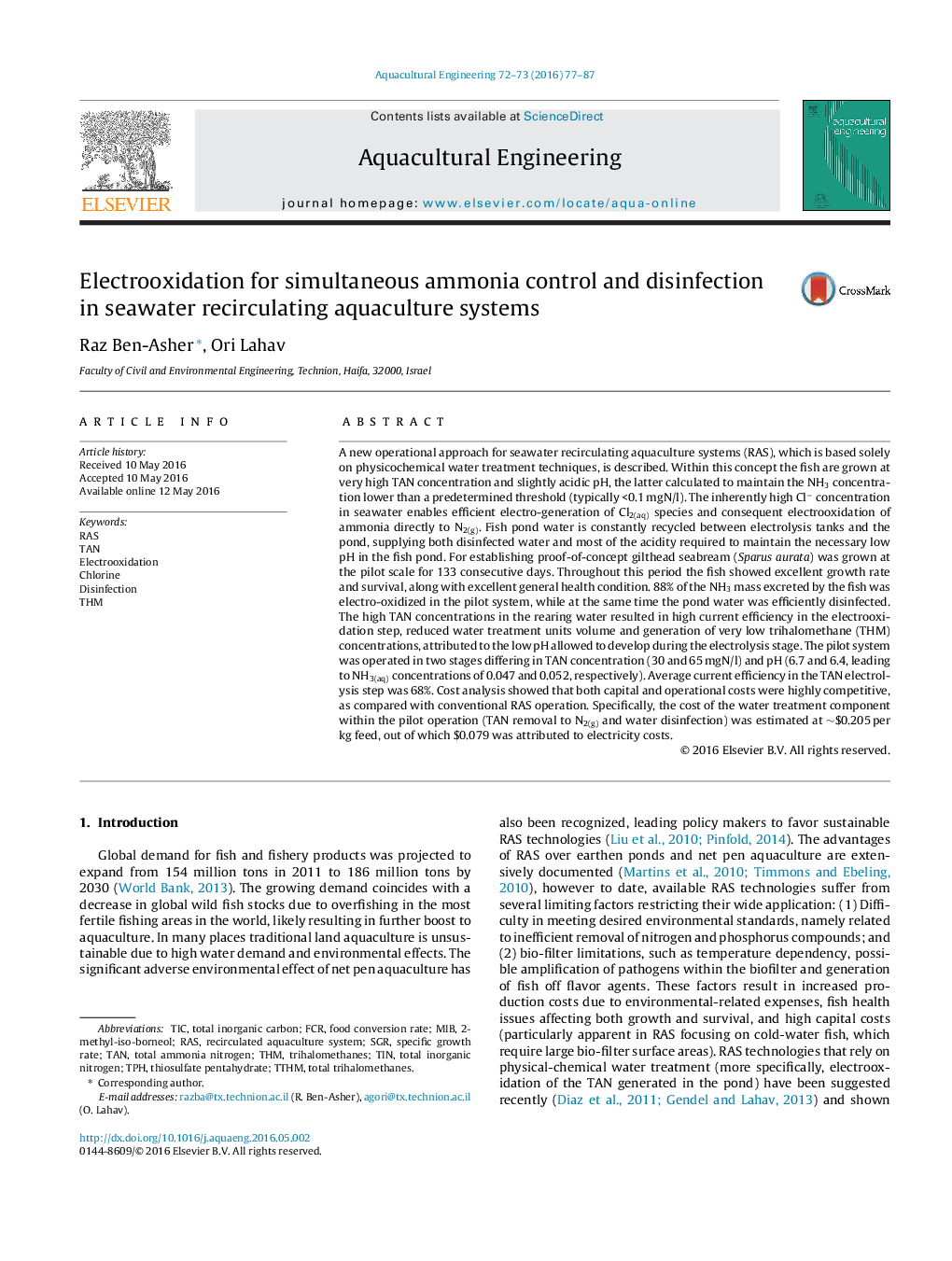| کد مقاله | کد نشریه | سال انتشار | مقاله انگلیسی | نسخه تمام متن |
|---|---|---|---|---|
| 4527126 | 1625698 | 2016 | 11 صفحه PDF | دانلود رایگان |
A new operational approach for seawater recirculating aquaculture systems (RAS), which is based solely on physicochemical water treatment techniques, is described. Within this concept the fish are grown at very high TAN concentration and slightly acidic pH, the latter calculated to maintain the NH3 concentration lower than a predetermined threshold (typically <0.1 mgN/l). The inherently high Cl− concentration in seawater enables efficient electro-generation of Cl2(aq) species and consequent electrooxidation of ammonia directly to N2(g). Fish pond water is constantly recycled between electrolysis tanks and the pond, supplying both disinfected water and most of the acidity required to maintain the necessary low pH in the fish pond. For establishing proof-of-concept gilthead seabream (Sparus aurata) was grown at the pilot scale for 133 consecutive days. Throughout this period the fish showed excellent growth rate and survival, along with excellent general health condition. 88% of the NH3 mass excreted by the fish was electro-oxidized in the pilot system, while at the same time the pond water was efficiently disinfected. The high TAN concentrations in the rearing water resulted in high current efficiency in the electrooxidation step, reduced water treatment units volume and generation of very low trihalomethane (THM) concentrations, attributed to the low pH allowed to develop during the electrolysis stage. The pilot system was operated in two stages differing in TAN concentration (30 and 65 mgN/l) and pH (6.7 and 6.4, leading to NH3(aq) concentrations of 0.047 and 0.052, respectively). Average current efficiency in the TAN electrolysis step was 68%. Cost analysis showed that both capital and operational costs were highly competitive, as compared with conventional RAS operation. Specifically, the cost of the water treatment component within the pilot operation (TAN removal to N2(g) and water disinfection) was estimated at ∼$0.205 per kg feed, out of which $0.079 was attributed to electricity costs.
Journal: Aquacultural Engineering - Volumes 72–73, May–July 2016, Pages 77–87
